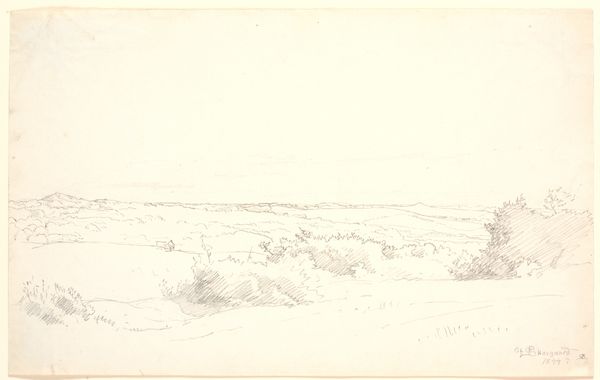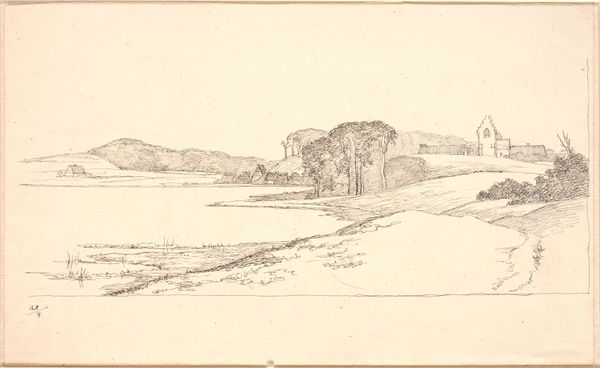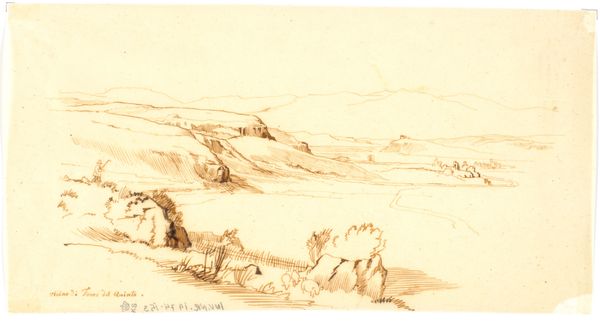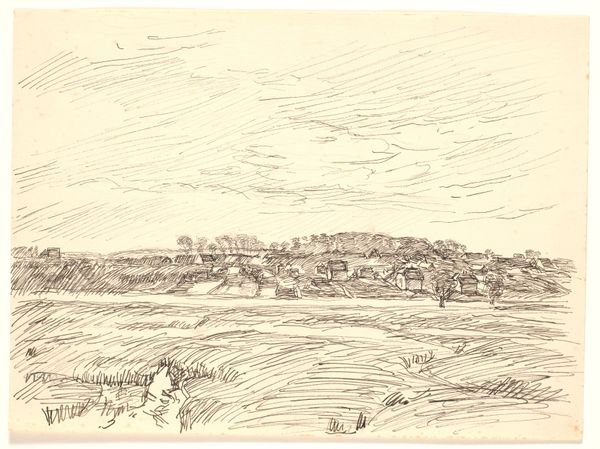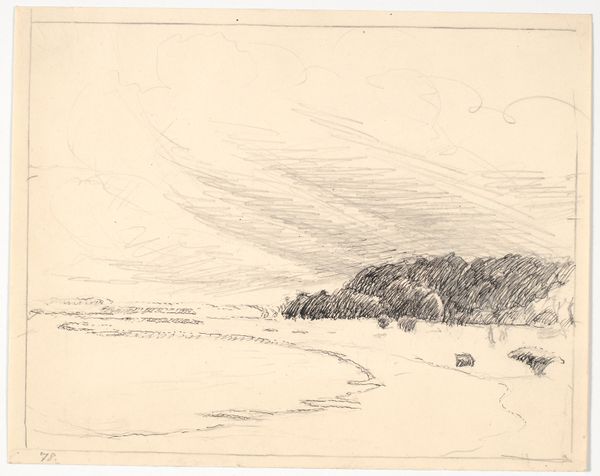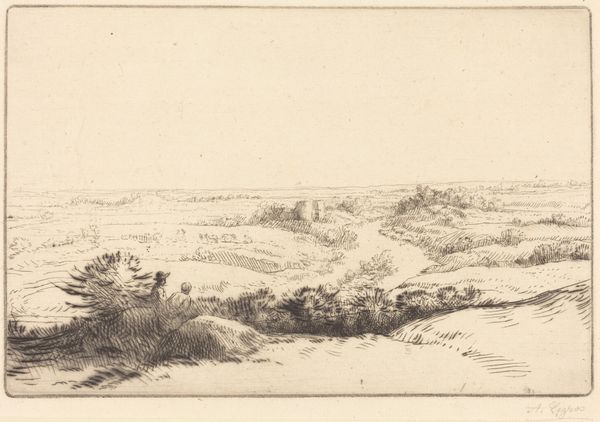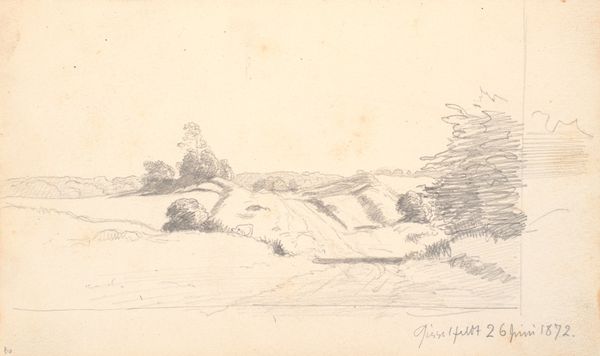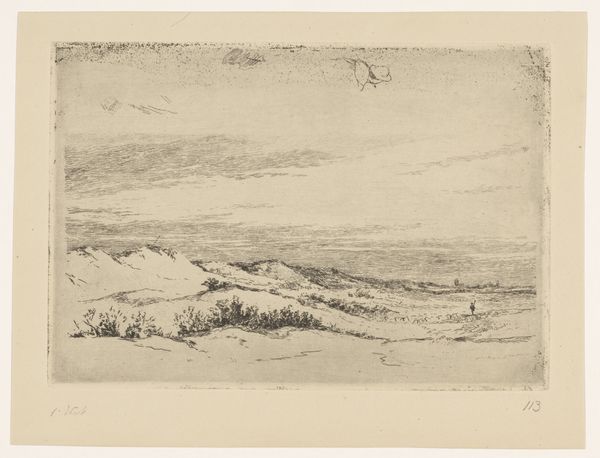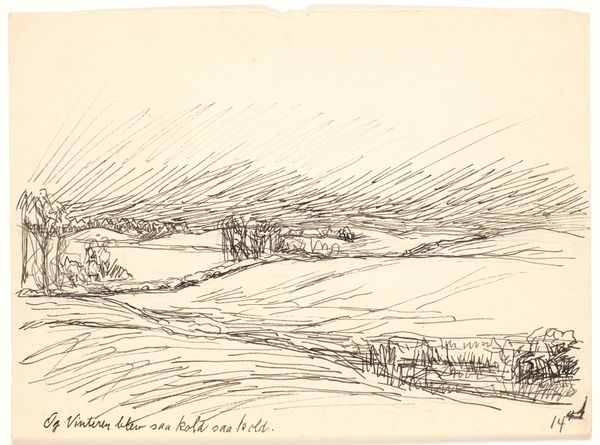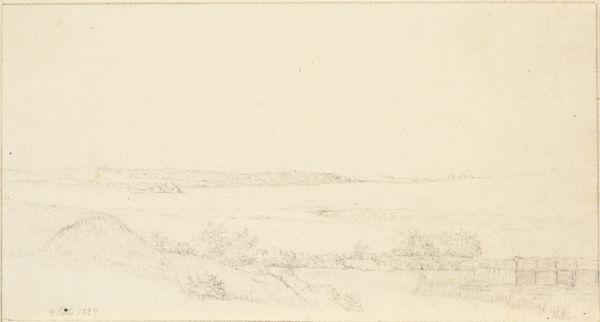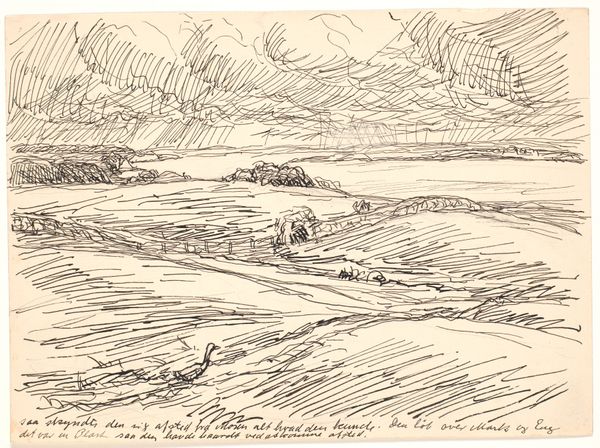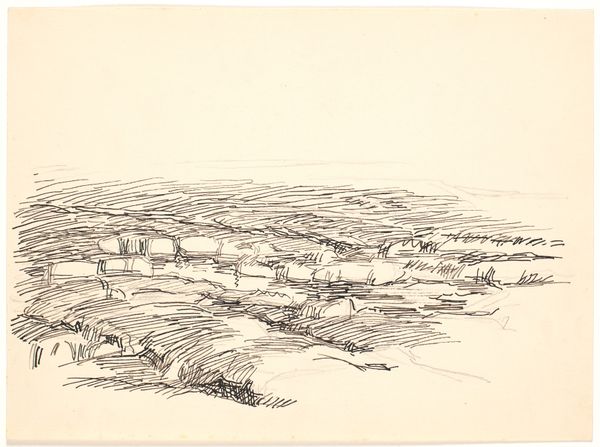
drawing, ink, pen
#
drawing
#
pen sketch
#
landscape
#
etching
#
ink
#
romanticism
#
pen-ink sketch
#
botanical drawing
#
pen
Dimensions: 114 mm (height) x 220 mm (width) (bladmaal)
Editor: This is "Aqua acetosa," a pen and ink drawing made in 1837 by Martinus Rørbye. It's quite a detailed sketch of a landscape. The landscape drawing feels almost dreamlike in its simplicity, with an emphasis on the natural landscape, river and hills, sketched with such subtle detail. What can you tell me about it? Curator: Well, consider the materials. Rørbye chose pen and ink, easily portable tools. Why? This wasn't meant for the salon, but for on-site observation. The speed and economy of line suggest an artist capturing a fleeting moment, documenting his travels in Italy. The materiality itself reflects the process of exploration and documentation inherent in early 19th-century landscape art, where observation preceded studio paintings. Think about how the accessibility of these materials democratized art-making to an extent, shifting away from the more labored approach to painting. Editor: That's interesting! So you are saying that it wasn’t just about the scene itself but more about how and why it was captured with pen and ink at that place and time? Curator: Exactly. We have to ask, who was this artist? How were these drawings used, and who was able to make use of these new techniques in capturing landscape and topography with increased accuracy in pen and ink and, ultimately, lithography? It moves us toward art’s function beyond just visual delight. It challenges the conventional, art-for-art’s-sake concept by grounding us in the material conditions of art creation and it gives insight into his means of travel, his status and access to fine pen and paper. What might those circumstances suggest about artistic trends of the period? Editor: I guess that shifts the focus from the romantic vision of the landscape to the logistics and access involved in creating that vision. Curator: Precisely. It encourages a more grounded, less romantic understanding. Instead of solely focusing on the aesthetic beauty, we recognize the intersection of materiality, labour, and social context in shaping artistic creation. Editor: I see it now, thinking about art as a process rather than just an image is fascinating! Thanks.
Comments
No comments
Be the first to comment and join the conversation on the ultimate creative platform.


